Newly Updated: The Jewish Role in the Bolshevik Revolution and Russia’s Early Soviet Regime, part 1
by Mark Weber
IN THE NIGHT of July 16-17, 1918, a squad of Bolshevik secret police murdered Russia’s last emperor, Tsar Nicholas II, along with his wife, Tsaritsa Alexandra, their 14-year-old son, Tsarevich Alexis, and their four daughters. They were cut down in a hail of gunfire in a half-cellar room of the Ipatiev house in Ekaterinburg, a city in the Ural mountain region, where they were being held prisoner. The daughters were finished off with bayonets. To prevent a cult for the dead Tsar, the bodies were carted away to the countryside and hastily buried in a secret grave.
Bolshevik authorities at first reported that the Romanov emperor had been shot after the discovery of a plot to liberate him. For some time the deaths of the Empress and the children were kept secret. Soviet historians claimed for many years that local Bolsheviks had acted on their own in carrying out the killings, and that Lenin, founder of the Soviet state, had nothing to do with the crime.
In 1990, Moscow playwright and historian Edvard Radzinsky announced the result of his detailed investigation into the murders. He unearthed the reminiscences of Lenin’s bodyguard, Alexei Akimov, who recounted how he personally delivered Lenin’s execution order to the telegraph office. The telegram was also signed by Soviet government chief Yakov Sverdlov. Akimov had saved the original telegraph tape as a record of the secret order.
Radzinsky’s research confirmed what earlier evidence had already indicated. Leon Trotsky — one of Lenin’s closest colleagues — had revealed years earlier that Lenin and Sverdlov had together made the decision to put the Tsar and his family to death. Recalling a conversation in 1918, Trotsky wrote:
My next visit to Moscow took place after the [temporary] fall of Ekaterinburg [to anti-Communist forces]. Speaking with Sverdlov, I asked in passing: “Oh yes, and where is the Tsar?”
“Finished,” he replied. “He has been shot.”
“And where is the family?”
“The family along with him.”
“All of them?,” I asked, apparently with a trace of surprise.
“All of them,” replied Sverdlov. “What about it?” He was waiting to see my reaction. I made no reply.
“And who made the decision?,” I asked.
“We decided it here. Ilyich [Lenin] believed that we shouldn’t leave the Whites a live banner to rally around, especially under the present difficult circumstances.”
I asked no further questions and considered the matter closed.
Recent research and investigation by Radzinsky and others also corroborates the account provided years earlier by Robert Wilton, correspondent of the London Times in Russia for 17 years. His account, The Last Days of the Romanovs — originally published in 1920, and recently reissued by the Institute for Historical Review — is based in large part on the findings of a detailed investigation carried out in 1919 by Nikolai Sokolov under the authority of “White” (anti-Communist) leader Alexander Kolchak. Wilton’s book remains one of the most accurate and complete accounts of the murder of Russia’s imperial family.
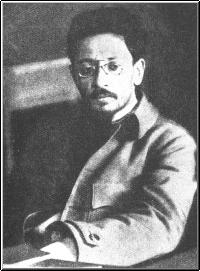
A solid understanding of history has long been the best guide to comprehending the present and anticipating the future. Accordingly, people are most interested in historical questions during times of crisis, when the future seems most uncertain. With the collapse of Communist rule in the Soviet Union, 1989-1991, and as Russians struggle to build a new order on the ruins of the old, historical issues have become very topical. For example, many ask: How did the Bolsheviks, a small movement guided by the teachings of German-Jewish social philosopher Karl Marx, succeed in taking control of Russia and imposing a cruel and despotic regime on its people?
In recent years, Jews around the world have been voicing anxious concern over the specter of anti-Semitism in the lands of the former Soviet Union. In this new and uncertain era, we are told, suppressed feelings of hatred and rage against Jews are once again being expressed. According to one public opinion survey conducted in 1991, for example, most Russians wanted all Jews to leave the country. But precisely why is anti-Jewish sentiment so widespread among the peoples of the former Soviet Union? Why do so many Russians, Ukrainians, Lithuanians and others blame “the Jews” for so much misfortune?
A Taboo Subject
Although officially Jews have never made up more than five percent of the country’s total population, they played a highly disproportionate and probably decisive role in the infant Bolshevik regime, effectively dominating the Soviet government during its early years. Soviet historians, along with most of their colleagues in the West, for decades preferred to ignore this subject. The facts, though, cannot be denied.
With the notable exception of Lenin (Vladimir Ulyanov), most of the leading Communists who took control of Russia in 1917-20 were Jews. Leon Trotsky (Lev Bronstein) headed the Red Army and, for a time, was chief of Soviet foreign affairs. Yakov Sverdlov (Solomon) was both the Bolshevik party’s executive secretary and — as chairman of the Central Executive Committee — head of the Soviet government. Grigori Zinoviev (Radomyslsky) headed the Communist International (Comintern), the central agency for spreading revolution in foreign countries. Other prominent Jews included press commissar Karl Radek (Sobelsohn), foreign affairs commissar Maxim Litvinov (Wallach), Lev Kamenev (Rosenfeld) and Moisei Uritsky.
Lenin himself was of mostly Russian and Kalmuck ancestry, but he was also one-quarter Jewish. His maternal grandfather, Israel (Alexander) Blank, was a Ukrainian Jew who was later baptized into the Russian Orthodox Church.
A thorough-going internationalist, Lenin viewed ethnic or cultural loyalties with contempt. He had little regard for his own countrymen. “An intelligent Russian,” he once remarked, “is almost always a Jew or someone with Jewish blood in his veins.”
Critical Meetings
In the Communist seizure of power in Russia, the Jewish role was probably critical.
Two weeks prior to the Bolshevik “October Revolution” of 1917, Lenin convened a top secret meeting in St. Petersburg (Petrograd) at which the key leaders of the Bolshevik party’s Central Committee made the fateful decision to seize power in a violent takeover. Of the twelve persons who took part in this decisive gathering, there were four Russians (including Lenin), one Georgian (Stalin), one Pole (Dzerzhinsky), and six Jews.
To direct the takeover, a seven-man “Political Bureau” was chosen. It consisted of two Russians (Lenin and Bubnov), one Georgian (Stalin), and four Jews (Trotsky, Sokolnikov, Zinoviev, and Kamenev). Meanwhile, the Petersburg (Petrograd) Soviet — whose chairman was Trotsky — established an 18-member “Military Revolutionary Committee” to actually carry out the seizure of power. It included eight (or nine) Russians, one Ukrainian, one Pole, one Caucasian, and six Jews. Finally, to supervise the organization of the uprising, the Bolshevik Central Committee established a five-man “Revolutionary Military Center” as the Party’s operations command. It consisted of one Russian (Bubnov), one Georgian (Stalin), one Pole (Dzerzhinsky), and two Jews (Sverdlov and Uritsky).
Contemporary Voices of Warning
Well-informed observers, both inside and outside of Russia, took note at the time of the crucial Jewish role in Bolshevism. Winston Churchill, for one, warned in an article published in the February 8, 1920, issue of the London Illustrated Sunday Herald that Bolshevism is a “worldwide conspiracy for the overthrow of civilization and for the reconstitution of society on the basis of arrested development, of envious malevolence, and impossible equality.” The eminent British political leader and historian went on to write:There is no need to exaggerate the part played in the creation of Bolshevism and in the actual bringing about of the Russian Revolution by these international and for the most part atheistical Jews. It is certainly a very great one; it probably outweighs all others. With the notable exception of Lenin, the majority of the leading figures are Jews. Moreover, the principal inspiration and driving power comes from the Jewish leaders. Thus Tchitcherin, a pure Russian, is eclipsed by his nominal subordinate, Litvinoff, and the influence of Russians like Bukharin or Lunacharski cannot be compared with the power of Trotsky, or of Zinovieff, the Dictator of the Red Citadel (Petrograd), or of Krassin or Radek — all Jews. In the Soviet institutions the predominance of Jews is even more astonishing. And the prominent, if not indeed the principal, part in the system of terrorism applied by the Extraordinary Commissions for Combatting Counter-Revolution [the Cheka] has been taken by Jews, and in some notable cases by Jewesses
Needless to say, the most intense passions of revenge have been excited in the breasts of the Russian people.David R. Francis, United States ambassador in Russia, warned in a January 1918 dispatch to Washington: “The Bolshevik leaders here, most of whom are Jews and 90 percent of whom are returned exiles, care little for Russia or any other country but are internationalists and they are trying to start a worldwide social revolution.”
The Netherlands’ ambassador in Russia, Oudendyke, made much the same point a few months later: “Unless Bolshevism is nipped in the bud immediately, it is bound to spread in one form or another over Europe and the whole world as it is organized and worked by Jews who have no nationality, and whose one object is to destroy for their own ends the existing order of things.”
“The Bolshevik Revolution,” declared a leading American Jewish community paper in 1920, “was largely the product of Jewish thinking, Jewish discontent, Jewish effort to reconstruct.”
As an expression of its radically anti-nationalist character, the fledgling Soviet government issued a decree a few months after taking power that made anti-Semitism a crime in Russia. The new Communist regime thus became the first in the world to severely punish all expressions of anti-Jewish sentiment. Soviet officials apparently regarded such measures as indispensable. Based on careful observation during a lengthy stay in Russia, American-Jewish scholar Frank Golder reported in 1925 that “because so many of the Soviet leaders are Jews anti-Semitism is gaining [in Russia], particularly in the army [and] among the old and new intelligentsia who are being crowded for positions by the sons of Israel.”
Historians’ Views
Summing up the situation at that time, Israeli historian Louis Rapoport writes:Immediately after the [Bolshevik] Revolution, many Jews were euphoric over their high representation in the new government. Lenin’s first Politburo was dominated by men of Jewish origins
Under Lenin, Jews became involved in all aspects of the Revolution, including its dirtiest work. Despite the Communists’ vows to eradicate anti-Semitism, it spread rapidly after the Revolution — partly because of the prominence of so many Jews in the Soviet administration, as well as in the traumatic, inhuman Sovietization drives that followed. Historian Salo Baron has noted that an immensely disproportionate number of Jews joined the new Bolshevik secret police, the Cheka. And many of those who fell afoul of the Cheka would be shot by Jewish investigators.
The collective leadership that emerged in Lenin’s dying days was headed by the Jew Zinoviev, a loquacious, mean-spirited, curly-haired Adonis whose vanity knew no bounds.”Anyone who had the misfortune to fall into the hands of the Cheka,” wrote Jewish historian Leonard Schapiro, “stood a very good chance of finding himself confronted with, and possibly shot by, a Jewish investigator.” In Ukraine, “Jews made up nearly 80 percent of the rank-and-file Cheka agents,” reports W. Bruce Lincoln, an American professor of Russian history. (Beginning as the Cheka, or Vecheka the Soviet secret police was later known as the GPU, OGPU, NKVD, MVD and KGB.)
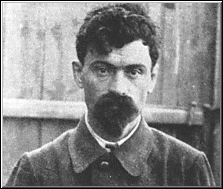
In light of all this, it should not be surprising that Yakov M. Yurovksy, the leader of the Bolshevik squad that carried out the murder of the Tsar and his family, was Jewish, as was Sverdlov, the Soviet chief who co-signed Lenin’s execution order.
Igor Shafarevich, a Russian mathematician of world stature, has sharply criticized the Jewish role in bringing down the Romanov monarchy and establishing Communist rule in his country. Shafarevich was a leading dissident during the final decades of Soviet rule. A prominent human rights activist, he was a founding member of the Committee on the Defense of Human Rights in the USSR.
In Russophobia, a book written ten years before the collapse of Communist rule, he noted that Jews were “amazingly” numerous among the personnel of the Bolshevik secret police. The characteristic Jewishness of the Bolshevik executioners, Shafarevich went on, is most conspicuous in the execution of Nicholas II:This ritual action symbolized the end of centuries of Russian history, so that it can be compared only to the execution of Charles I in England or Louis XVI in France. It would seem that representatives of an insignificant ethnic minority should keep as far as possible from this painful action, which would reverberate in all history. Yet what names do we meet? The execution was personally overseen by Yakov Yurovsky who shot the Tsar; the president of the local Soviet was Beloborodov (Vaisbart); the person responsible for the general administration in Ekaterinburg was Shaya Goloshchekin. To round out the picture, on the wall of the room where the execution took place was a distich from a poem by Heine (written in German) about King Balthazar, who offended Jehovah and was killed for the offense.In his 1920 book, British veteran journalist Robert Wilton offered a similarly harsh assessment:The whole record of Bolshevism in Russia is indelibly impressed with the stamp of alien invasion. The murder of the Tsar, deliberately planned by the Jew Sverdlov (who came to Russia as a paid agent of Germany) and carried out by the Jews Goloshchekin, Syromolotov, Safarov, Voikov and Yurovsky, is the act not of the Russian people, but of this hostile invader.In the struggle for power that followed Lenin’s death in 1924, Stalin emerged victorious over his rivals, eventually succeeding in putting to death nearly every one of the most prominent early Bolshevik leaders — including Trotsky, Zinoviev, Radek, and Kamenev. With the passage of time, and particularly after 1928, the Jewish role in the top leadership of the Soviet state and its Communist party diminished markedly.
Writing on the Wall: The Heine Quotation
Lines adapted from the German-Jewish poet Heinrich Heine (1797-1856) were found written on the wall, by the window, in the basement of the Ipatiev House, where the Romanovs were shot and bayoneted. The distich reads: “Belsatzar ward in selbiger Nacht / Von seinen Knechten umgebracht,” “Belsatzar was, on the same night, killed by his slaves.”
Belshazzar — the Gentile king of Babylon who, in the well-known Old Testament story, saw “the writing on the wall” foretelling his destruction (Daniel 5) — was killed as punishment for his offenses against Israel’s God. In a clever play on the Heine quotation, the unknown writer, almost certainly one of the killers, has substituted “Belsatzar” for Heine’s spelling “Belsazar,” in order to signal even more clearly his intended symbolism. The Heine inscription described the racial/ethnic character of the murders: A Gentile king had just been killed as an act of Jewish retribution.
–Irmin
Put To Death Without Trial
For a few months after taking power, Bolshevik leaders considered bringing “Nicholas Romanov” before a “Revolutionary Tribunal” that would publicize his “crimes against the people” before sentencing him to death. Historical precedent existed for this. Two European monarchs had lost their lives as a consequence of revolutionary upheaval: England’s Charles I was beheaded in 1649, and France’s Louis XVI was guillotined in 1793.
In these cases, the king was put to death after a lengthy public trial, during which he was allowed to present arguments in his defense. Nicholas II, though, was neither charged nor tried. He was secretly put to death — along with his family and staff — in the dead of night, in an act that resembled more a gangster-style massacre than a formal execution.
Why did Lenin and Sverdlov abandon plans for a show trial of the former Tsar? In Wilton’s view, Nicholas and his family were murdered because the Bolshevik rulers knew quite well that they lacked genuine popular support, and rightly feared that the Russian people would never approve killing the Tsar, regardless of pretexts and legalistic formalities.
For his part, Trotsky defended the massacre as a useful and even necesssary measure. He wrote:The decision [to kill the imperial family] was not only expedient but necessary. The severity of this punishment showed everyone that we would continue to fight on mercilessly, stopping at nothing. The execution of the Tsar’s family was needed not only in order to frighten, horrify, and instill a sense of hopelessness in the enemy but also to shake up our own ranks, to show that there was no turning back, that ahead lay either total victory or total doom This Lenin sensed well.
Historical Context
In the years leading up to the 1917 revolution, Jews were disproportionately represented in all of Russia’s subversive leftist parties. Jewish hatred of the Tsarist regime had a basis in objective conditions. Of the leading European powers of the day, imperial Russia was the most institutionally conservative and anti-Jewish. For example, Jews were normally not permitted to reside outside a large area in the west of the Empire known as the “Pale of Settlement.”
However understandable, and perhaps even defensible, Jewish hostility toward the imperial regime may have been, the remarkable Jewish role in the vastly more despotic Soviet regime is less easy to justify. In a recently published book about the Jews in Russia during the 20th century, Russian-born Jewish writer Sonya Margolina goes so far as to call the Jewish role in supporting the Bolshevik regime the “historic sin of the Jews.” She points, for example, to the prominent role of Jews as commandants of Soviet Gulag concentration and labor camps, and the role of Jewish Communists in the systematic destruction of Russian churches. Moreover, she goes on, “The Jews of the entire world supported Soviet power, and remained silent in the face of any criticism from the opposition.” In light of this record, Margolina offers a grim prediction:The exaggeratedly enthusiastic participation of the Jewish Bolsheviks in the subjugation and destruction of Russia is a sin that will be avenged. Soviet power will be equated with Jewish power, and the furious hatred against the Bolsheviks will become hatred against Jews.If the past is any indication, it is unlikely that many Russians will seek the revenge that Margolina prophecies. Anyway, to blame “the Jews” for the horrors of Communism seems no more justifiable than to blame “white people” for Negro slavery, or “the Germans” for the Second World War or “the Holocaust.”
Words of Grim Portent
Nicholas and his family are only the best known of countless victims of a regime that openly proclaimed its ruthless purpose. A few weeks after the Ekaterinburg massacre, the newspaper of the fledgling Red Army declared:Without mercy, without sparing, we will kill our enemies by the scores of hundreds, let them be thousands, let them drown themselves in their own blood. For the blood of Lenin and Uritsky let there be floods of blood of the bourgeoisie — more blood, as much as possible.Grigori Zinoviev, speaking at a meeting of Communists in September 1918, effectively pronounced a death sentence on ten million human beings: “We must carry along with us 90 million out of the 100 million of Soviet Russia’s inhabitants. As for the rest, we have nothing to say to them. They must be annihilated.”
‘The Twenty Million’
As it turned out, the Soviet toll in human lives and suffering proved to be much higher than Zinoviev’s murderous rhetoric suggested. Rarely, if ever, has a regime taken the lives of so many of its own people.
Citing newly available Soviet KGB documents, historian Dmitri Volkogonov, head of a special Russian parliamentary commission, recently concluded that “from 1929 to 1952 21.5 million [Soviet] people were repressed. Of these a third were shot, the rest sentenced to imprisonment, where many also died.”
Olga Shatunovskaya, a member of the Soviet Commission of Party Control, and head of a special commission during the 1960s appointed by premier Khrushchev, has similarly concluded: “From January 1, 1935 to June 22, 1941, 19,840,000 enemies of the people were arrested. Of these, seven million were shot in prison, and a majority of the others died in camp.” These figures were also found in the papers of Politburo member Anastas Mikoyan.
Robert Conquest, the distinguished specialist of Soviet history, recently summed up the grim record of Soviet “repression” of it own people:It is hard to avoid the conclusion that the post-1934 death toll was well over ten million. To this should be added the victims of the 1930-1933 famine, the kulak deportations, and other anti-peasant campaigns, amounting to another ten million plus. The total is thus in the range of what the Russians now refer to as ‘The Twenty Million’.”A few other scholars have given significantly higher estimates.
The Tsarist Era in Retrospect
With the dramatic collapse of Soviet rule, many Russians are taking a new and more respectful look at their country’s pre-Communist history, including the era of the last Romanov emperor. While the Soviets — along with many in the West — have stereotypically portrayed this era as little more than an age of arbitrary despotism, cruel suppression and mass poverty, the reality is rather different. While it is true that the power of the Tsar was absolute, that only a small minority had any significant political voice, and that the mass of the empire’s citizens were peasants, it is worth noting that Russians during the reign of Nicholas II had freedom of press, religion, assembly and association, protection of private property, and free labor unions. Sworn enemies of the regime, such as Lenin, were treated with remarkable leniency.
During the decades prior to the outbreak of the First World War, the Russian economy was booming. In fact, between 1890 and 1913, it was the fastest growing in the world. New rail lines were opened at an annual rate double that of the Soviet years. Between 1900 and 1913, iron production increased by 58 percent, while coal production more than doubled. Exported Russian grain fed all of Europe. Finally, the last decades of Tsarist Russia witnessed a magnificent flowering of cultural life.
Everything changed with the First World War, a catastrophe not only for Russia, but for the entire West.
Monarchist Sentiment
In spite of (or perhaps because of) the relentless official campaign during the entire Soviet era to stamp out every uncritical memory of the Romanovs and imperial Russia, a virtual cult of popular veneration for Nicholas II has been sweeping Russia in recent years.
People have been eagerly paying the equivalent of several hours’ wages to purchase portraits of Nicholas from street vendors in Moscow, St. Petersburg and other Russian cities. His portrait now hangs in countless Russian homes and apartments. In late 1990, all 200,000 copies of a first printing of a 30-page pamphlet on the Romanovs quickly sold out. Said one street vendor: “I personally sold four thousand copies in no time at all. It’s like a nuclear explosion. People really want to know about their Tsar and his family.” Grass roots pro-Tsarist and monarchist organizations have sprung up in many cities.
A public opinion poll conducted in 1990 found that three out of four Soviet citizens surveyed regard the killing of the Tsar and his family as a despicable crime. Many Russian Orthodox believers regard Nicholas as a martyr. The independent “Orthodox Church Abroad” canonized the imperial family in 1981, and the Moscow-based Russian Orthodox Church has been under popular pressure to take the same step, in spite of its long-standing reluctance to touch this official taboo. The Russian Orthodox Archbishop of Ekaterinburg announced plans in 1990 to build a grand church at the site of the killings. “The people loved Emperor Nicholas,” he said. “His memory lives with the people, not as a saint but as someone executed without court verdict, unjustly, as a sufferer for his faith and for orthodoxy.”
On the 75th anniversary of the massacre (in July 1993), Russians recalled the life, death and legacy of their last Emperor. In Ekaterinburg, where a large white cross festooned with flowers now marks the spot where the family was killed, mourners wept as hymns were sung and prayers were said for the victims.
Reflecting both popular sentiment and new social-political realities, the white, blue and red horizontal tricolor flag of Tsarist Russia was officially adopted in 1991, replacing the red Soviet banner. And in 1993, the imperial two-headed eagle was restored as the nation’s official emblem, replacing the Soviet hammer and sickle. Cities that had been re-named to honor Communist figures — such as Leningrad, Kuibyshev, Frunze, Kalinin, and Gorky — have re-acquired their Tsarist-era names. Ekaterinburg, which had been named Sverdlovsk by the Soviets in 1924 in honor of the Soviet-Jewish chief, in September 1991 restored its pre-Communist name, which honors Empress Catherine I.
Symbolic Meaning
In view of the millions that would be put to death by the Soviet rulers in the years to follow, the murder of the Romanov family might not seem of extraordinary importance. And yet, the event has deep symbolic meaning. In the apt words of Harvard University historian Richard Pipes:The manner in which the massacre was prepared and carried out, at first denied and then justified, has something uniquely odious about it, something that radically distinguishes it from previous acts of regicide and brands it as a prelude to twentieth-century mass murder.Another historian, Ivor Benson, characterized the killing of the Romanov family as symbolic of the tragic fate of Russia and, indeed, of the entire West, in this century of unprecedented agony and conflict.
The murder of the Tsar and his family is all the more deplorable because, whatever his failings as a monarch, Nicholas II was, by all accounts, a personally decent, generous, humane and honorable man.
The Massacre’s Place in History
The mass slaughter and chaos of the First World War, and the revolutionary upheavals that swept Europe in 1917-1918, brought an end not only to the ancient Romanov dynasty in Russia, but to an entire continental social order. Swept away as well was the Hohenzollern dynasty in Germany, with its stable constitutional monarchy, and the ancient Habsburg dynasty of Austria-Hungary with its multinational central European empire. Europe’s leading states shared not only the same Christian and Western cultural foundations, but most of the continent’s reigning monarchs were related by blood. England’s King George was, through his mother, a first cousin of Tsar Nicholas, and, through his father, a first cousin of Empress Alexandra. Germany’s Kaiser Wilhelm was a first cousin of the German-born Alexandra, and a distant cousin of Nicholas.
More than was the case with the monarchies of western Europe, Russia’s Tsar personally symbolized his land and nation. Thus, the murder of the last emperor of a dynasty that had ruled Russia for three centuries not only symbolically presaged the Communist mass slaughter that would claim so many Russian lives in the decades that followed, but was symbolic of the Communist effort to kill the soul and spirit of Russia itself.
Appendix
A striking feature of Mr. Wilton’s examination of the tumultuous 1917-1919 period in Russia is his frank treatment of the critically important Jewish role in establishing the Bolshevik regime.
The following lists of persons in the Bolshevik Party and Soviet administration during this period, which Wilton compiled on the basis of official reports and original documents, underscore the crucial Jewish role in these bodies. These lists first appeared in the rare French edition of Wilton’s book, published in Paris in 1921 under the title Les Derniers Jours des Romanoffs. They did not appear in either the American or British editions of The Last Days of the Romanovs published in 1920.
“I have done all in my power to act as an impartial chronicler,” Wilton wrote in his foreword to Les Derniers Jours des Romanoffs. “In order not to leave myself open to any accusation of prejudice, I am giving the list of the members of the [Bolshevik Party’ s] Central Committee, of the Extraordinary Commission [Cheka or secret police], and of the Council of Commissars functioning at the time of the assassination of the Imperial family.
“The 62 members of the [Central] Committee were composed of five Russians, one Ukrainian, six Letts [Latvians], two Germans, one Czech, two Armenians, three Georgians, one Karaim [Karaite] (a Jewish sect), and 41 Jews.
“The Extraordinary Commission [Cheka or Vecheka] of Moscow was composed of 36 members, including one German, one Pole, one Armenian, two Russians, eight Latvians, and 23 Jews.
“The Council of the People’s Commissars [the Soviet .government] numbered two Armenians, three Russians, and 17 Jews.
“According to data furnished by the Soviet press, out of 556 important functionaries of the Bolshevik state, including the above-mentioned, in 1918-1919 there were: 17 Russians, two Ukrainians, eleven Armenians, 35 Letts [Latvians], 15 Germans, one Hungarian, ten Georgians, three Poles, three Finns, one Czech, one Karaim, and 457 Jews.”
“If the reader is astonished to find the Jewish hand everywhere in the affair of the assassination of the Russian Imperial family, he must bear in mind the formidable numerical preponderance of Jews in the Soviet administration,” Wilton went on to write.
Effective governmental power, Wilton continued (on pages 136-138 of the same edition) is in the Central Committee of the Bolshevik party. In 1918, he reported, this body had twelve members, of whom nine were of Jewish origin, and three were of Russian ancestry. The nine Jews were: Bronstein (Trotsky), Apfelbaum (Zinoviev), Lurie (Larine), Uritsky, Volodarski, Rosenfeld (Kamenev), Smidovich, Sverdlov (Yankel), and Nakhamkes (Steklov). The three Russians were: Ulyanov (Lenin), Krylenko, and Lunacharsky.
“The other Russian Socialist parties are similar in composition,” Wilton went on. “Their Central Committees are made up as follows:”
Mensheviks (Social Democrats): Eleven members, all of whom are Jewish.
Communists of the People: Six members, of whom five are Jews and one is a Russian.
Social Revolutionaries (Right Wing): Fifteen members, of whom 13 are Jews and two are Russians (Kerenski, who may be of Jewish origin, and Tchaikovski).
Social Revolutionaries (Left Wing): Twelve members, of whom ten are Jews and two are Russians.
Committee of the Anarchists of Moscow: Five members, of whom four are Jews and one is a Russian.
Polish Communist Party: Twelve members, all of whom are Jews, including Sobelson (Radek), Krokhenal (Zagonski), and Schwartz (Goltz).
“These parties,” commented Wilton, “in appearance opposed to the Bolsheviks, play the Bolsheviks’ game on the sly, more or less, by preventing the Russians from pulling themselves together. Out of 61 individuals at the head of these parties, there are six Russians and 55 Jews. No matter what may be the name adopted, a revolutionary government will be Jewish.”
[Although the Bolsheviks permitted these leftist political groups to operate for a time under close supervision and narrow limits, even these pitiful remnants of organized opposition were thoroughly eliminated by the end of the 1921.]
The Soviet government, or “Council of People’s Commissars’ (also known as the “Sovnarkom”) was made up of the following, Wilton reported:
| Peoples Commissariat (Ministry) | Name | Nationality |
| Chairman | V.I. Ulyanov (Lenin) | Russian |
| Foreign Affairs | G.V. Chicherin | Russian |
| Nationalities | J. Dzhugashvili [Stalin] | Georgian |
| Agriculture | Protian | Armenian |
| Economic Council | Lourie (Larin) | Jew |
| Food Supply | A.G. Schlikhter | Jew |
| Army and Navy [Military] | L.D. Bronstein (Trotski) | Jew |
| State Control | K.I. Lander | Jew |
| State Lands | Kaufmann | Jew |
| Works [Labor] | V. Schmidt | Jew |
| Social Relief | E. Lilina (Knigissen) | Jew |
| Education | A. Lunacharsky | Russian |
| Religion | Spitzberg | Jew |
| Interior | Apfelbaum [Radomyslski] (Zinoviev) | Jew |
| Hygiene | Anvelt | Jew |
| Finance | I. E. Gukovs [and G. Sokolnikov] | Jew |
| Press | Voldarski [Goldstein] | Jew |
| Elections | M.S. Uritsky | Jew |
| Justice | I.Z. Shteinberg | Jew |
| Refugees | Fenigstein | Jew |
| Refugees | Savitch (Assistant) | Jew |
| Refugees | Zaslovski (Assistant) | Jew |
Out of these 22 “Sovnarkom” members, Wilton summed up, there were three Russians, one Georgian, one Armenian, and 17 Jews.
The Central Executive Committee, Wilton continues, was made up of the following members:
| Y. M. Sverdlov [Solomon] (Chairman) | Jew |
| Avanesov (Secretary) | Armenian |
| Bruno | Latvian |
| Breslau | Latvian [?] |
| Babtchinski | Jew |
| N. I. Bukharin | Russian |
| Weinberg | Jew |
| Gailiss | Jew |
| Ganzberg [Ganzburg ] | Jew |
| Danichevski | Jew |
| Starck | German |
| Sachs | Jew |
| Scheinmann | Jew |
| Erdling | Jew |
| Landauer | Jew |
| Linder | Jew |
| Wolach | Czech |
| S. Dimanshtein | Jew |
| Encukidze | Georgian |
| Ermann | Jew |
| A. A. Ioffe | Jew |
| Karkhline | Jew |
| Knigissen | Jew |
| Rosenfeld (Kamenev) | Jew |
| Apfelbaum (Zinoviev) | Jew |
| N. Krylenko | Russian |
| Krassikov | Jew |
| Kaprik | Jew |
| Kaoul | Latvian |
| Ulyanov (Lenin) | Russian |
| Latsis | Jew |
| Lander | Jew |
| Lunacharsky | Russian |
| Peterson | Latvian |
| Peters | Latvian |
| Roudzoutas | Jew |
| Rosine | Jew |
| Smidovitch | Jew |
| Stoutchka | Latvian |
| Nakhamkes (Steklov) | Jew |
| Sosnovski | Jew |
| Skrytnik | Jew |
| L. Bronstein (Trotsky) | Jew |
| Teodorovitch | Jew [?] |
| Terian | Armenian |
| Uritsky | Jew |
| Telechkine | Russian |
| Feldmann | Jew |
| Fromkin | Jew |
| Souriupa | Ukrainian |
| Tchavtchevadze | Georgian |
| Scheikmann | Jew |
| Rosental | Jew |
| Achkinazi | Imeretian [?] |
| Karakhane | Karaim [Karaite] |
| Rose | Jew |
| Sobelson (Radek) | Jew |
| Schlichter | Jew |
| Schikolini | Jew |
| Chklianski | Jew |
| Levine-(Pravdine) | Jew |
Thus, concluded Wilton, out of 61 members, five were Russians, six were Latvians, one was a German, two were Armenians, one was a Czech, one was an Imeretian, two were Georgians, one was a Karaim, one was a Ukrainian, and 41 were Jews.
The Extraordinary Commission of Moscow (Cheka) ‘the Soviet secret police and predecessor of the GPU, the NKVD and the KGB was made up of the following:
| F. Dzerzhinsky (Chairman) | Pole |
| Y. Peters (Deputy Chairman) | Latvian |
| Chklovski | Jew |
| Kheifiss | Jew |
| Zeistine | Jew |
| Razmirovitch | Jew |
| Kronberg | Jew |
| Khaikina | Jew |
| Karlson | Latvian |
| Schaumann | Latvian |
| Leontovitch | Jew |
| Jacob Goldine | Jew |
| Galperstein | Jew |
| Kniggisen | Jew |
| Katzis | Latvian |
| Schillenkuss | Jew |
| Janson | Latvian |
| Rivkine | Jew |
| Antonof | Russian |
| Delafabre | Jew |
| Tsitkine | Jew |
| Roskirovitch | Jew |
| G. Sverdlov (Brother of president of the Central Executive Committee) | Jew |
| Biesenski | Jew |
| J. Blumkin (Count Mirbach’s assassin) | Jew |
| Alexandrovitch (Blumkin’s accomplice) | Russian |
| I. Model | Jew |
| Routenberg | Jew |
| Pines | Jew |
| Sachs | Jew |
| Daybol | Latvian |
| Saissoune | Armenian |
| Deylkenen | Latvian |
| Liebert | Jew |
| Vogel | German |
| Zakiss | Latvian |
Of these 36 Cheka officials, one was a Pole, one a German, one an Armenian, two were Russians, eight were Latvians, and 23 were Jews.
“Accordingly,” Wilton sums up, “there is no reason to be surprised at the preponderant role of Jews in the assassination of the Imperial family. It is rather the opposite that would have been surprising.”
* * *
Journal of Historical Review 14, no. 1, (Jan-Feb 1994), 4ff. Mark Weber’s detailed footnotes have been removed from the preceding text; the photographs, as well as the descriptions that accompany them, do not appear in the original. The complete text of Weber’s article is available at the IHR website.
via Race Realist (Irmin Vinson)


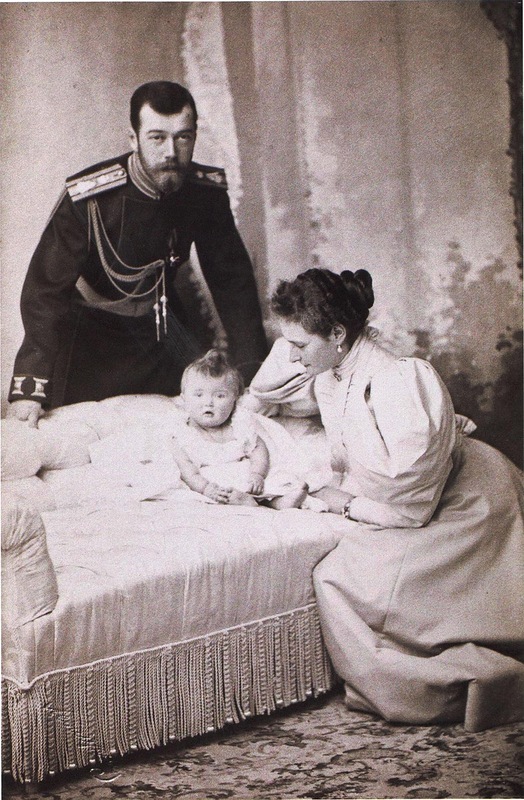

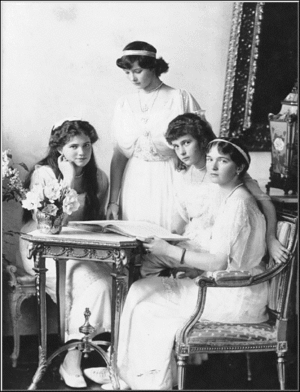
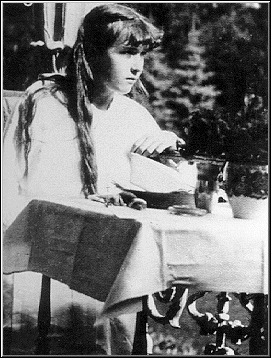

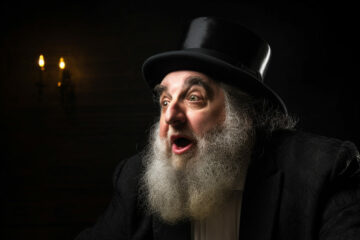
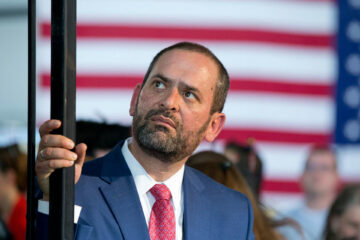
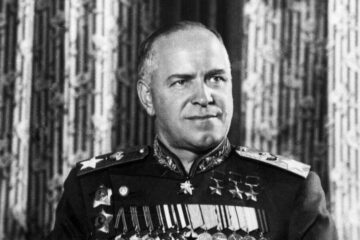
Well-known Jew financier Jacob Schiff
bankrolled the Bolshevik killers,
along with a few hundred Jewish thugs
from NYC. Not so well-known is that
one of his descendants – Andrew
Schiff – was united in marriage to
Gentile Al Gore’s daughter Karenna.
Coincidence? Let you – the reader –
decide for yourself.
https://www.truthcontrol.com/articles/jacob-schiff-ordered-czar-nicholas-ii-and-family-murdered
Thank you very much for this extremely informative essay on the Romanovs and of the Russian revolution. I have done extensive reading on the history of Russia and the Romanovs, having read all of Robert K. Massie’s books on those subjects. I have also read some of Matthew Ehret’s writings. Being an amateur radio (ham radio) operator since 1981 and having had many hundreds of contacts on the radio with Russians, I have found them to be a very friendly people. In my hobby of ham radio, we sometimes send “post cards” to each other and from the ones that I have received from Russians over the years, I have come to the conclusion that the Russian people are the same as Americans – they want to work, live, love,… Read more »
Consider that even now jews control the vast majority of the wealth in the world, not because they have a supernatural being looking out for their best interests but because they are excellent at playing the part of the oppressed when in reality they are the oppressors. Rothschilds, Bilderbergs, and Soros just to name a few, as for being experts in gemstones and cutting and polishing thereof sounds like that trade and loaning money are something they became experts of in the Middle Ages in Europe even during the Great Depression when the vast majority of the European Christians were starving and freezing the European jews were living quite comfortably. Who controls the Entertainment industry and the data source outlets, the jews of course hence constantly portraying themselves as the… Read more »
CRAIG, Riddle me this: CHRISTIANITY & ISLAM OUTLAWED USURY, BUT ALLOWED THE JEW TO DO IT! The fish rots from the head! THE GENESIS OF THE PROBLEM! If you study Genesis 47, you will find the FIRST PROTOCOL OF THE ELDERS OF ZION. It was there for all to see, but because we have been brainwashed with Christianity, we suffer from Cognitive dissonance, and are wilfully ignorant of what is before our eyes. For the past 3000 years, the Jew has used this modus operandi, to fool and control the Goyim/Gentile – playing the MIDDLEMAN between the RULER and the RULED! Underline verses 26-27 Now go to Deuteronomy 7:1-26 and read the Script for the JWO. Throughout history this parasite infested every empire and country and “sucked it… Read more »
cannot agree more on that one – yes, it is simplified truth – but still truth – We were all warned – and still we’re brainwashed every single day – in our living times with – only one propaganda – how jews were only exclusive victims. – History teach us – how they hijacked like Troian – every part of the world – and put their agenda into the new states. – I think their power is trully big – because they control and have in their hands most of the world capital. – The “Jews Question” will be more and more visible – in future time – and interesting days – will came to their lives. – Many of them will reject the past – and I can even… Read more »
Looking at the big picture of this, these Bolshevik Jews, who are less about orthodoxy and more about being an ethnic group, come to power and brutally subjugate the Russian people. They kill tens of millions, and want to carry their scheme to the rest of the world. Hitler comes along and targets the Jew as a platform for his propaganda machine to coalesce enough Germans around his plans to restore Germany and rule the world. Did the actions taken by the Bolshevik Jews have anything to do with Hitler targeting the Jew? No matter what anyone thinks about what atrocities Hitler committed, his propaganda machine was immensely instrumental in his acquisition of power. Regardless of the ‘why’ Hitler targeted Jews, he could not have even for a brief moment… Read more »
“I only wish that Patton were still alive today to see with the hindsight that is available to us now. We can only wish that Patton would have known then what many of us know now about the dangers of jew Bolshevik communists, but Patton quickly caught on that something was a miss when the war ended.”
https://nationalvanguard.org/2022/06/why-general-george-s-patton-was-murdered/
Greetings from Australia. Thank you for your well written article. It must be difficult to write about the lives and deaths of millions of innocents at the hands of a ruthless few, while keeping a lid on your own emotions. Had the Tzar executed his enemies and not merely exiled them, he probably would have avoided his fate, but by all accounts he was a decent man, though not a great ruler. Am so happy for the Russian people to find a new respect for their royal family and I hope that grows.